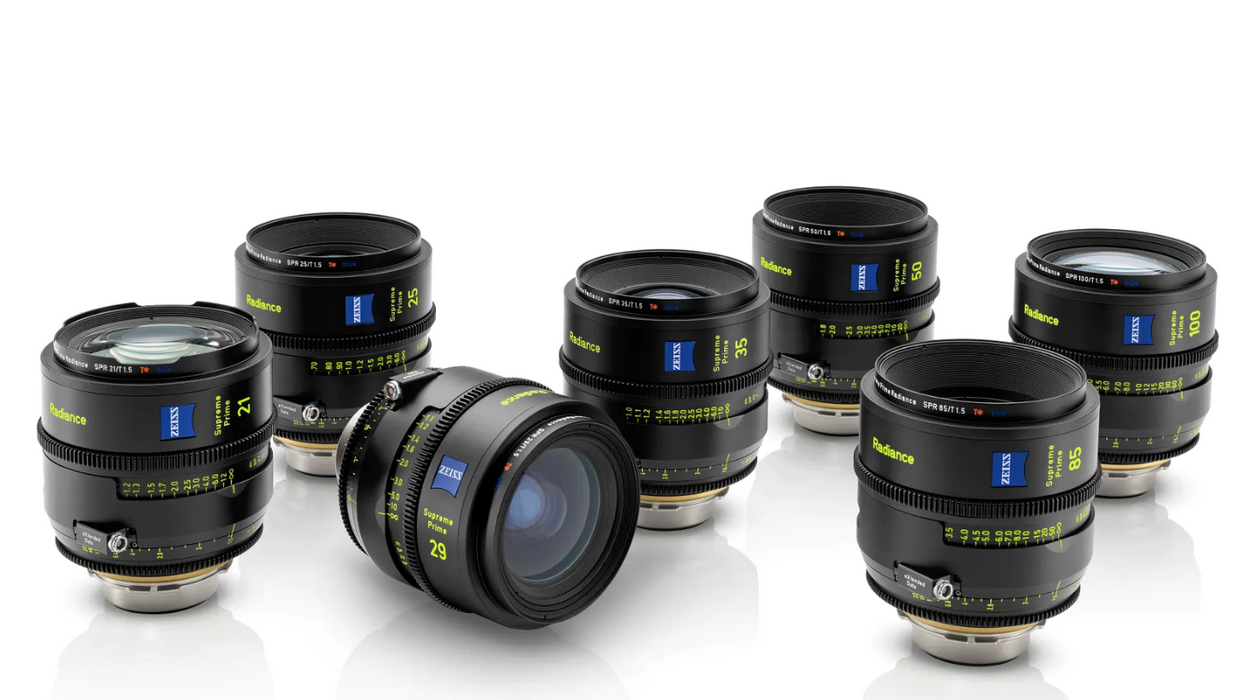What Zeiss' New Radiance Primes Teach Us About Lens Choices
ZEISS' Supreme Prime Radiance Lenses might come at a Supreme cost, but there's lots to take away from the example footage.

First, let's talk about these new lenses.
From hits at SXSW to television favorites to their collaboration with ARRI, ZEISS lenses can be found everywhere. This week, ZEISS announced a new set of Prime lenses with a special new T*blue coating that enhances lens flares while maintaining contrast: The ZEISS Supreme Prime Radiance Lenses.
While the new feature here is "Full Control" over flare, it's not controlled by something like a button or a focus ring. Control, rather, is defined as the following: "under the appropriate lighting, the lenses will flare." With regular lighting, they will "render like modern and versatile cinematography lenses." This means that cinematographers can plan for their flares with lighting setups and camera movement.
A heads up: If you're looking for those horizontal anamorphic lens flares that are characteristic of Atlas and Cooke lenses, these likely aren't the ticket. As you'll see, the flares have lots of character, but they are not linear in nature (more circular). (You could however DIY some horizontal flares with some fishing line or another tool and see how that goes!)
ZEISS has released a side by side comparison with their Radiance and non-Radiance Supreme Prime lenses. As you can see, the Radiance lens gives more flare and more character.
Outside of the differences between ZEISS Primes with and without the new T* blue coating, what more can we take away from these new lenses? ZEISS turned to two cinematographers to test out the Radiance primes, and through their work, there are a few key takeaways.
Lenses Can Be Story Elements
Cinematographer Rodrigo Prieto ASC, AMC set out to make a short film R&R with the new Radiance lenses. In his reflection, Prieto talks through how the flares produced by the lenses play a part in the story and how the lenses bring "emotional impact" to the story. Prieto was able to "utilize the characteristics of the lens for storytelling." In this way, the look and the unique flavor of the lens can enhance and help tell the story.
Lenses Can Bring "Accents" and Tone
ZEISS also shared the short Metamorphosis by cinematographer Takura Ishizaka, JSC. Ishizaka noted the flare possibilities across all lens types. In addition, with a moving subject and a moving camera, the flares gave an "accent" to the piece.
Lenses Can Feel Organic (If You Want Them To)
Both cinematographers noted that the lenses felt "soft but sharp," in a non-aggressive way. Prieto also called the lens "organic." Prieto notes that using the lens with the full-frame camera feels closer to what his eye would see, in terms of perspective. With both tools together, lenses can help what you capture feel organic... if you want it to! If the look you're going for feels off-kilter, non-organic, and unique, then you're likely on the search for a lens that, similarly, doesn't feel organic, normal, or traditional. Either way, the look and feel of your story will dictate the lens you'd like to use for the project.
So, let's talk about that cost. A set of 6 ZEISS Supreme Primes, without the Radiance designation, is about $120,000. So, we'll keep a lookout to see what a set of Radiance Primes might be, and, how things shift in April 2020.
Happy flaring!
* The asterisk is part of the T* Blue name, so no real footnote here, but since you're down here, I'll reward you with the following.
Featured image by ZEISS











